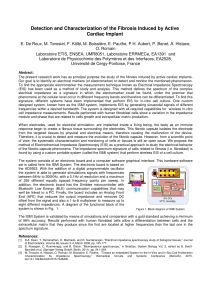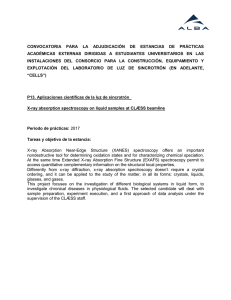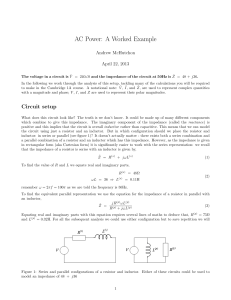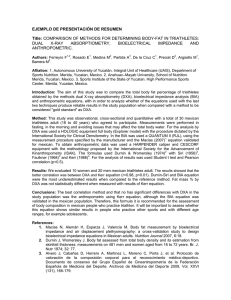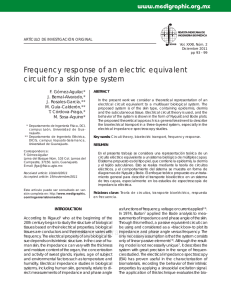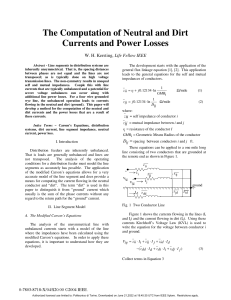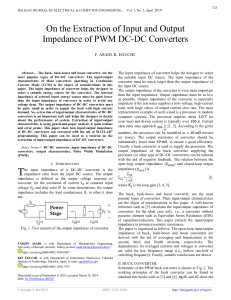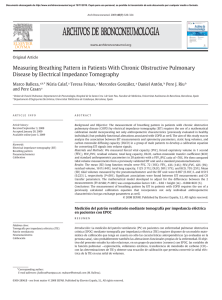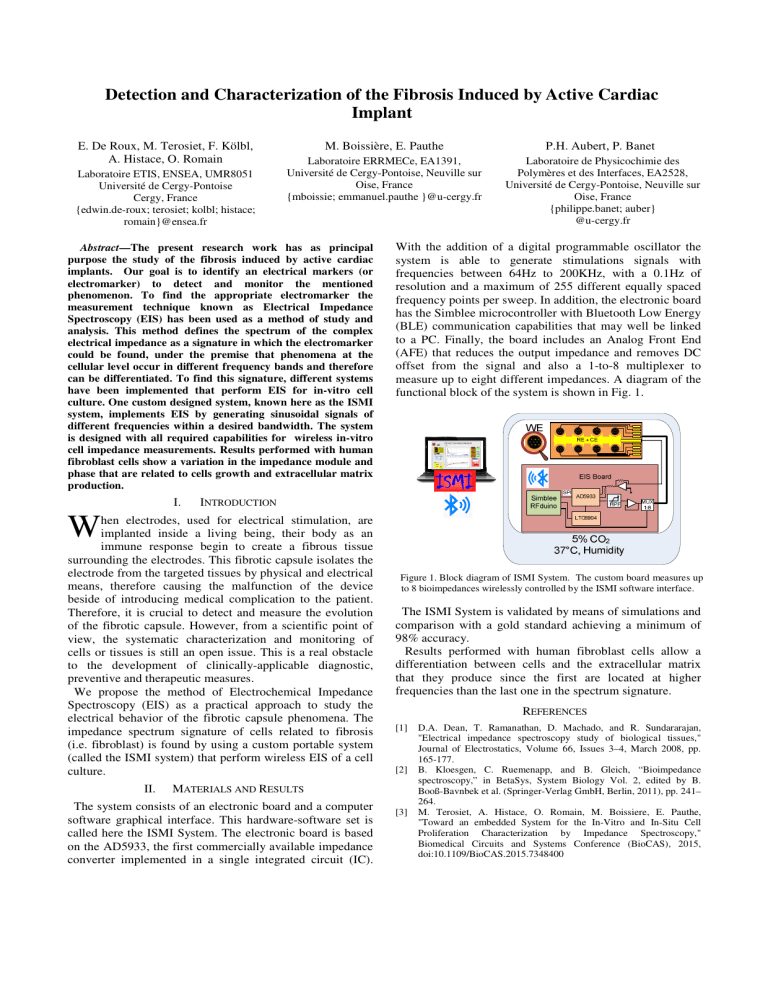
Detection and Characterization of the Fibrosis Induced by Active Cardiac
Implant
E. De Roux, M. Terosiet, F. Kölbl,
A. Histace, O. Romain
Laboratoire ETIS, ENSEA, UMR8051
Université de Cergy-Pontoise
Cergy, France
{edwin.de-roux; terosiet; kolbl; histace;
romain}@ensea.fr
M. Boissière, E. Pauthe
P.H. Aubert, P. Banet
Laboratoire ERRMECe, EA1391,
Université de Cergy-Pontoise, Neuville sur
Oise, France
{mboissie; emmanuel.pauthe }@u-cergy.fr
Laboratoire de Physicochimie des
Polymères et des Interfaces, EA2528,
Université de Cergy-Pontoise, Neuville sur
Oise, France
{philippe.banet; auber}
@u-cergy.fr
Abstract—The present research work has as principal
purpose the study of the fibrosis induced by active cardiac
implants. Our goal is to identify an electrical markers (or
electromarker) to detect and monitor the mentioned
phenomenon. To find the appropriate electromarker the
measurement technique known as Electrical Impedance
Spectroscopy (EIS) has been used as a method of study and
analysis. This method defines the spectrum of the complex
electrical impedance as a signature in which the electromarker
could be found, under the premise that phenomena at the
cellular level occur in different frequency bands and therefore
can be differentiated. To find this signature, different systems
have been implemented that perform EIS for in-vitro cell
culture. One custom designed system, known here as the ISMI
system, implements EIS by generating sinusoidal signals of
different frequencies within a desired bandwidth. The system
is designed with all required capabilities for wireless in-vitro
cell impedance measurements. Results performed with human
fibroblast cells show a variation in the impedance module and
phase that are related to cells growth and extracellular matrix
production.
I.
With the addition of a digital programmable oscillator the
system is able to generate stimulations signals with
frequencies between 64Hz to 200KHz, with a 0.1Hz of
resolution and a maximum of 255 different equally spaced
frequency points per sweep. In addition, the electronic board
has the Simblee microcontroller with Bluetooth Low Energy
(BLE) communication capabilities that may well be linked
to a PC. Finally, the board includes an Analog Front End
(AFE) that reduces the output impedance and removes DC
offset from the signal and also a 1-to-8 multiplexer to
measure up to eight different impedances. A diagram of the
functional block of the system is shown in Fig. 1.
INTRODUCTION
W
hen electrodes, used for electrical stimulation, are
implanted inside a living being, their body as an
immune response begin to create a fibrous tissue
surrounding the electrodes. This fibrotic capsule isolates the
electrode from the targeted tissues by physical and electrical
means, therefore causing the malfunction of the device
beside of introducing medical complication to the patient.
Therefore, it is crucial to detect and measure the evolution
of the fibrotic capsule. However, from a scientific point of
view, the systematic characterization and monitoring of
cells or tissues is still an open issue. This is a real obstacle
to the development of clinically-applicable diagnostic,
preventive and therapeutic measures.
We propose the method of Electrochemical Impedance
Spectroscopy (EIS) as a practical approach to study the
electrical behavior of the fibrotic capsule phenomena. The
impedance spectrum signature of cells related to fibrosis
(i.e. fibroblast) is found by using a custom portable system
(called the ISMI system) that perform wireless EIS of a cell
culture.
II.
Figure 1. Block diagram of ISMI System. The custom board measures up
to 8 bioimpedances wirelessly controlled by the ISMI software interface.
The ISMI System is validated by means of simulations and
comparison with a gold standard achieving a minimum of
98% accuracy.
Results performed with human fibroblast cells allow a
differentiation between cells and the extracellular matrix
that they produce since the first are located at higher
frequencies than the last one in the spectrum signature.
REFERENCES
[1]
[2]
MATERIALS AND RESULTS
The system consists of an electronic board and a computer
software graphical interface. This hardware-software set is
called here the ISMI System. The electronic board is based
on the AD5933, the first commercially available impedance
converter implemented in a single integrated circuit (IC).
[3]
D.A. Dean, T. Ramanathan, D. Machado, and R. Sundararajan,
"Electrical impedance spectroscopy study of biological tissues,"
Journal of Electrostatics, Volume 66, Issues 3–4, March 2008, pp.
165-177.
B. Kloesgen, C. Ruemenapp, and B. Gleich, “Bioimpedance
spectroscopy,” in BetaSys, System Biology Vol. 2, edited by B.
Booß-Bavnbek et al. (Springer-Verlag GmbH, Berlin, 2011), pp. 241–
264.
M. Terosiet, A. Histace, O. Romain, M. Boissiere, E. Pauthe,
"Toward an embedded System for the In-Vitro and In-Situ Cell
Proliferation Characterization by Impedance Spectroscopy,"
Biomedical Circuits and Systems Conference (BioCAS), 2015,
doi:10.1109/BioCAS.2015.7348400
